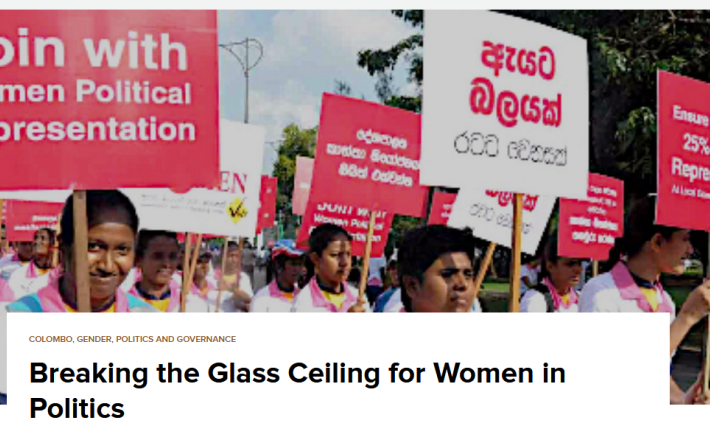Breaking the glass ceiling for women in politics
Source: Ground Views
Women in Sri Lanka face serious barriers to political representation and the country ranks among the lowest in the world for the percentage of women in national legislatures. After the parliamentary elections in 2020, there were just over five percent of elected women representatives in parliament.
Underrepresentation of women occurs at each level of elected leaders at national, provincial and local government level due to a variety of systemic and institutional obstacles.
In 2016, through the Local Authorities (Amendment) Act, a 25 percent quota was mandated for women and implemented through the Local Authorities Elections Act of 2017. The quota increased women’s representation in local authorities from two percent to nearly 23 percent.
Click here to read the full article published by Ground Views on 31 January 2023.
Image source: Ground Views
.

Women in Sri Lanka face serious barriers to political representation and the country ranks among the lowest in the world for the percentage of women in national legislatures. After the parliamentary elections in 2020, there were just over five percent of elected women representatives in parliament.
Underrepresentation of women occurs at each level of elected leaders at national, provincial and local government level due to a variety of systemic and institutional obstacles.
In 2016, through the Local Authorities (Amendment) Act, a 25 percent quota was mandated for women and implemented through the Local Authorities Elections Act of 2017. The quota increased women’s representation in local authorities from two percent to nearly 23 percent.
Click here to read the full article published by Ground Views on 31 January 2023.
Image source: Ground Views
.